In historical times, when there was no abundance of fabrics, thrifty housewives sewed linen from scraps and used them to create blankets, bedspreads, pillows, carpets. Over time, patchwork sewing (patchwork) was overgrown with performance techniques and acquired an individual orientation in the art of needlework. In the article, we will talk about various techniques for stitching tissue fragments and conduct several master classes for beginners.

Basic cut rules
Patchwork canvases may seem chaotic, but in fact, they have a clear cut technique and a special selection of colors. Each flap is cut according to the template in compliance with the dimensions. The geometric accuracy of the fragments allows you to create a beautiful and harmonious canvas. To combine every detail, during cutting and stitching certain rules are observed:
- To cut out fragments of the future canvas using a template and a piece of chalk. Chalk can be replaced with a small pointed remnant, which many housewives store in their sewing supplies.
- It is more convenient to use two templates, one of which is slightly larger than the other. This makes it possible to cut out parts with allowances.
- During cutting, the direction of the shared thread is taken into account. The synchronous orientation of all the flaps will help prevent deformation of the product after washing. For the same purpose, flaps of the same density are selected for stitching. For example, such a combination as linen and knitwear, in the future can lead to a distortion of the geometric proportions of the fabric.
- During cutting or stitching, pins are used to fix the fragment and prevent its movement.
- When working on a sewing machine, you need to make sure that the foot goes along the edge of the fabric, creating an even allowance of 6 mm, this will make it possible to get clear and even seams.
- The fabric is being cut with sharp scissors, a roller knife and a special cutter.




In the modern art of patchwork, the block method of manufacturing a product is popular. Blocks are cut and stitched in advance from triangles, squares, stripes, and then combined into a single canvas.

Choose fabric
When choosing fabrics, one should not forget about their compatibility: one can sit down during washing or stretch, the other remains unchanged. Problems arise if a colored shedding material with light fragments is crosslinked.
In the selection of fabrics, the purpose of the thing in the patchwork style is also taken into account. For the panels on the wall, any rags are suitable, and for children's blankets - only natural ones that contain safe dyes.


For patchwork, certain types of material can be used.
Cotton
The most popular and sought-after at all times remains cotton. It is a durable, durable, natural fabric. It is easy to work with it even for a beginner, since cotton has a moderate density, does not spread and does not crumble, is easily sewn and retains its original shape. A large number of modern materials are created on the basis of cotton.

Linen
Durable natural fabric with high hygroscopicity. The ability to "breathe" is especially convenient for patchwork clothes designed for summer heat. If flax is not combined with synthetic thread, products from it often have to be ironed.

Flannel
Incredibly soft and tactilely pleasant fabric, created on the basis of cotton threads. It is often used for newborns. Therefore, flannel flaps can be safely used to create children's products in the style of patchwork.

Silk
If the fabric is natural, its cost is highly valued, even rags are expensive. Silk is thin, light, sophisticated and spectacular. But newcomers will not like working with him, as he slides and crumbles.

Some styles can not do without silk and satin, they include the eastern version and many historical directions.
Wool
Natural warm fabric, looks whole and comfortable. It is elastic, repels dirt, does not crease, for many years it can remain unchanged.
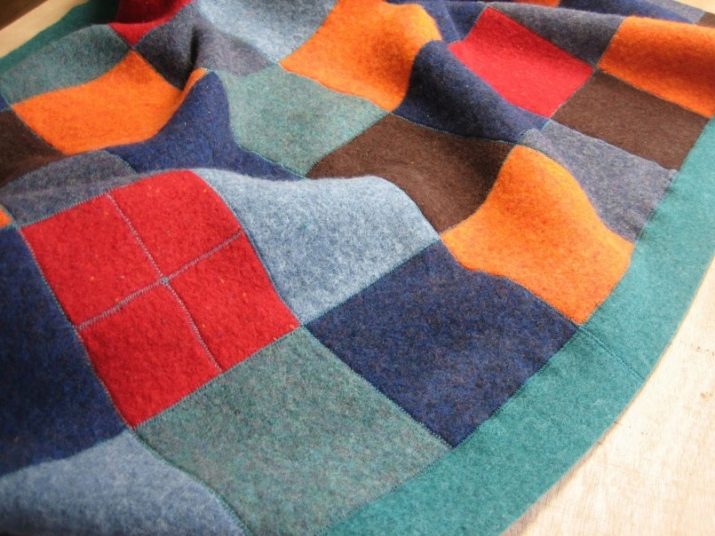
Chintz
The fabric is based on cotton, has medium density, bright colors, attractive and inexpensive.

Fleece
Soft synthetic material, very pleasant to the touch, lightweight, easy to wash and does not require ironing. Fleece flaps behave perfectly in the product, do not deform and do not fade.


Kulirka
The thinnest knitted product, which includes cotton threads. Things from the cooler patchwork really appeal to children for their softness and tactile sensations.

Leather
For patchwork use pieces of artificial and genuine leather. Beautiful products are obtained both from fragments painted in different colors, and selected in monochrome.

In addition to sewing from fabrics using the patchwork technique, they often resort to knitting or crocheting. It turns out warm, colorful and positive things.

What types of techniques are suitable for beginners?
Over the millennia of its existence, patchwork has developed many techniques. They are diverse, but most of them are not particularly difficult and are suitable for beginners. Combining tissue fragments into canvases can be done in different ways, and the techniques of stitching from strips, squares, multilayer chenille sandwiches and things with traditional Russian motifs appeared. The most popular variations of the patchwork include the execution methods presented below.


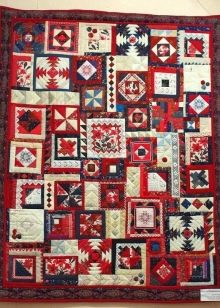
Traditional
A classic or traditional patchwork uses flaps of regular geometric shapes to create canvases - squares, triangles, rectangles. A blanket, for example, may consist entirely of squares. But the traditional approach allows you to also mix the types of curly flaps and make more lively and complex paintings.

The classic patchwork technique is applied only to the surface of an item, and its lower part is made of a single cut.
Japanese
Japanese patchwork is mostly traditional, but it also has its own characteristics, which make it easy to distinguish from patchwork sewing by masters from other countries. The Japanese skip stitches for the finished product, carefully consider the choice of color and structure of the fabric, although they work mainly with silk. This style is rich in applications on a natural or everyday theme.

Knitted
In this technique, products are not made from fabric flaps, but from knitted fragments, which are then connected together using a hook and thread into a large canvas or into any other thing (bag, pillowcase, sweater). The enterlak technique allows you to knit whole products, imitating fragments, but it turns out, as if sewn from rags.

Crazy Patchwork
Crazy is translated from English as "insanity." Style involves a chaotic mixture of forms, structure, color. Due to the difficulty of stitching, flap joints are often masked with appliqués, braid, lace, embroidery.


Quilt
Quilt means “quilting”. For quilting, the three-layer product is important: the front surface, soft lining and lower fabric. This type of needlework is often (but not always) used in patchwork for the surface of its “sandwich”.

"Watercolor"
For watercolor, color is important, not the shape of the pieces of fabric. The masterful transition from dark to light, without sharp contrasting lines, gives the impression of a watercolor drawing. As subjects, flower theme is often used.

"Well"
A small square is placed in the center of the product, on which subsequent figures are “worn” in ascending order. Sewing each square makes the image larger and larger. If you look at it from above, an illusory impression of a well is created. Skillful work with color helps to make the "well" more realistic.

"Jacob's Ladder"
Products in the Jacob's Ladder technique consist of blocks containing only two geometric shapes - a triangle and a square, but many options for their placement allow you to produce a variety of patterns.

Bargello
The color effect is important in this technique. At first glance, it may seem complicated, but if you diligently work out the color and follow the instructions step by step, you will get incredibly beautiful drawings.

"Pizza"
The product in this technique really resembles pizza. Novice craftswomen can go the easy way: sprinkle hot glue on the substrate, lay out randomly pieces of fabric, starting with large fragments and ending with small elements. The gaps must be completely filled. Then cover the product with paper and iron it so that the glue connects all parts of the canvas.


Boro
You can literally translate the word “boro” as “scraps” or “rags”. The style came from the patches that the Japanese sewed on poverty for their clothes. The modern population of the islands no longer needs such a method of repairing clothes, and the Boro technique has gradually moved from the lot of household necessities to needlework.


"Lyapochikha"
This technique is loved and applied by our craftswomen. Products look spectacular, like 3D pictures. The canvas is created for a long time, painstakingly, as it contains many small pieces, sometimes folded into tubes to create a larger volume. Sew fragments of tissue at one end, and the second remains free.

What tools are needed?
The creative process itself depends on the successful organization of the workplace. Every detail and every tool should be literally at hand, but not create chaos. Tools and materials must be prepared in advance.
- For work, you will need sharp scissors and several types of cutting knives.
- Needles are inserted into the sewing machine according to the type of fabric.
- When selecting threads, you need to focus on the selected material.
- An iron with a steaming function should work flawlessly, the patchwork process cannot do without it.
- Need pins to fix the fabric.
- We need pre-prepared templates and chalk for working with them.
- Materials (or trimmings) should be selected compatible in texture and color.

Depending on the chosen product, a synthetic winterizer, integral cuts of fabric, for example, for a duvet cover or pillowcase, may be needed. To decorate women's accessories - a bag or a cosmetic bag in the patchwork style, beads, rhinestones, and lace are prepared in advance.
Step-by-step schemes
In the needlework patchwork, even experienced craftswomen will need patterns, templates, detailed instructions with a description of the things being created. You can borrow ideas and technologies on the Internet. Those who begins to take the first steps in this area, it is better to choose the simplest things so as not to face disappointment from unsuccessful work. We offer beginner needlewomen several master classes for creating simple products.

Blanket
It is better to choose flaps for sewing blankets from natural fabrics, even if the bottom of the product is made from a solid cotton cut. It is uncomfortable to sleep under a synthetic blanket, as it does not allow air to pass through and is electrified. To make a patchwork-style blanket, the following steps are performed:
- using patterns and chalk, fabric is marked and cut out, each detail is numbered;
- the patches are steamed well and ironed;
- all fragments, taking into account the numbers, are sewn into a single fabric;
- the cut bottom of the future blanket is laid out face up on a hard surface;
- a synthetic winterizer is placed on its wrong side;
- the last, upper layer is a patchwork cloth;
- all three layers are sewn with threads along the edge, the seams are masked with a fringing material;
- so that the "sandwich" does not break up, the product is quilted over the entire surface.

A lovingly sewn blanket contributes to a pleasant, sound sleep and adds coziness to the interior.
Mat
Rugs are made in different ways, we offer a simple option that even an inexperienced craftswoman can easily do. For the product you will need:
- a piece of dense fabric that is twice the size of the intended rug;
- a piece of transparent fabric that matches the parameters of the future product;
- patchwork patches for creativity;
- synthetic winterizer or any other filler.

The dense fabric folds in half, covering a layer of synthetic winterizer on both sides. The assembled workpiece must be laid out on a solid surface, it will be the basis for creating the rug. On top of the dense fabric, the rags are laid out in the order that the craftswoman conceived. The product is covered with a transparent fabric from above and is carefully stitched not only along the edge, but also over the entire surface.

Thickly quilted fabric will not allow the flaps to move under a transparent cloth.
Tack
The potholder seems to be a small and inconspicuous attribute of the kitchen, but not a single housewife can do without it. But you can make it bright, memorable, accent, stylize the interior. It is not a shame to present such a hand-made to someone for the holiday, he will decorate any kitchen.
Beginning craftswomen need to master patchwork sewing from the tack. The work is simple, and the result does not have to wait long. A dense and fire-resistant material is selected for the product, which heats up for a long time. Any technique may be preferred. Most often resort to options such as “pizza” or “well”.
To make a kitchen thing in the “well” technique, you need to cut colored fabrics into strips of different sizes. Then they should be sewn onto the surface of the tack, forming squares, from the center to the edge (ascending). The edge is sheathed with a ribbon, which in a certain place ends with a loop.
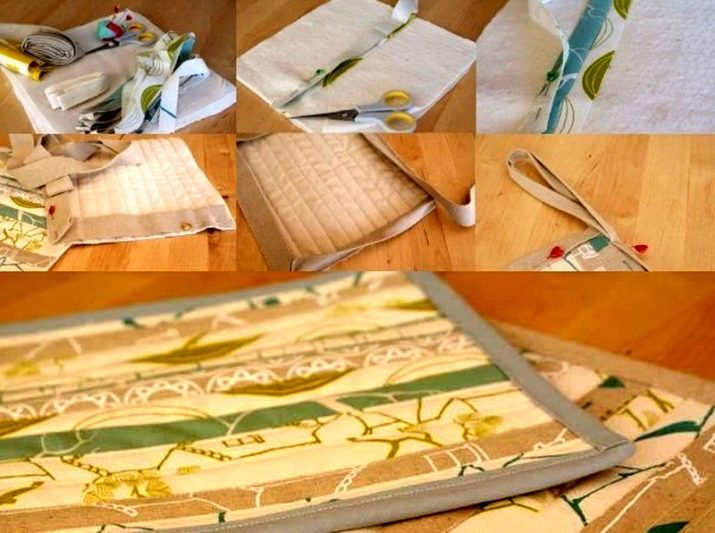
Pillowcase
The pattern of flaps is thought out in advance, a diagram is drawn up on which all the elements of the future ornament or image are applied. Then from a dense fabric, the pillowcase itself is sewn directly. Cut and numbered patches in the form of appliqués are sewn onto the surface of the pillowcase.
The second method consists in stitching the flaps according to a well-thought-out pattern into a small independent canvas, which then connects to the lining fabric. The finished blank becomes the surface of the pillowcase. It remains only to sew on the lower and reserve part of any natural material.

Dolls
Making a doll, even a simple one, with your own hands, is no less interesting than stitching a patchwork-style blanket. All actions should be performed in stages.
- A white linen square of fabric is taken, folded into a tube, fixed with threads. The workpiece is folded in half, and two legs are obtained. The place of the bend is tied with thread so that the limbs do not "move apart" to the sides, instead of shoes, pieces of burlap imitating bast shoes are attached to the legs.
- A head is made from the second linen square, for this a piece of cotton wool is placed in the center, a spherical part is formed and tied with thread.
- The rest of the fabric from the square, hanging under the head, is formed into spread arms, they are stitched to maintain their shape, and the cuffs are again tied with threads
- Sew the legs to a small piece of fabric that remains between the handles.
- We put on a doll and fix with a thread a beautiful skirt sewn in advance from rags.
- We tie the head with a triangular flap, depicting a scarf.


The doll is ready. Who does not want to leave a face faceless, can draw it.
Mattress cover
If it is necessary to hide the mattress under a beautiful cover in the style of patchwork, knitted fabrics are selected that can stretch and take the desired shape. Then such actions are performed.
- The surface of the mattress is measured and marked on the diagram indicating the parameters.
- The thickness of the mattress is measured, on the diagram it is supplemented with allowances of the right size on all sides. An additional 8 cm is added to the resulting figures to create a drawstring for the elastic.
- Then a patchwork pattern is drawn up. You can choose any technique.
- Flaps are cut out and sewn together, forming the fabric specified in the scheme.
- The edges are tucked and stitched, an elastic band is inserted into the formed drawstring.

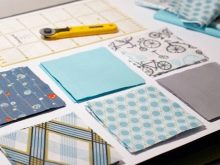
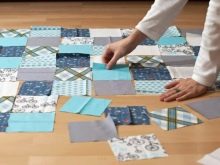
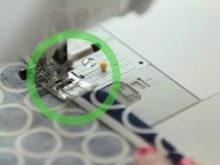


A bag
Bag making begins with a drawing and a paper pattern. A rectangle must be cut out of paper, by the dimensions of the front or back wall of the bag, as well as the part along which the sidewalls will be formed. Then you need to calculate and make a pattern of the bottom of the product.
The bag will look interesting in the Boro technique, sewn from patches of different sizes. The canvas is sewn to fit the size of the paper pattern. The front, back of the bag and two sidewalls are formed. The blanks are glued with adhesive material, gaining rigidity.
The bottom is double made of durable fabric. All parts of the bag are stitched together. Lining details are cut and stitched. The handle can be a chain, leather or rag belt.






Sometimes a zipper or magnetic closure is inserted into the product. The finished bag is decorated with fringe or other elements to taste.
Recommendations
In order to make a beautiful and positive product even for beginners, you should learn the basics and pay attention to some points in working with patchwork.
- A properly organized workplace will help facilitate the needlework process. It is better to get a lot of containers and put rags in them according to the texture and color. It is necessary to try so that everything necessary is at hand and at the same time has its usual place.
- Before starting new fabrics (or trimmings), they are washed and smoothed. This protects the product from deformation during operation.
- To reanimate tissues from old things, they can be sprayed from the spray bottle with water containing dissolved starch, and then ironed.
- In the process, all seams should be ironed in one direction, and the fabric should be smoothed along the shared thread.
- When a future product has been thought out and charted, we recommend stitching one test unit, analyzing all the errors on it, and only then proceed with the main project.




See how to cut a patchwork fabric in the next video.










